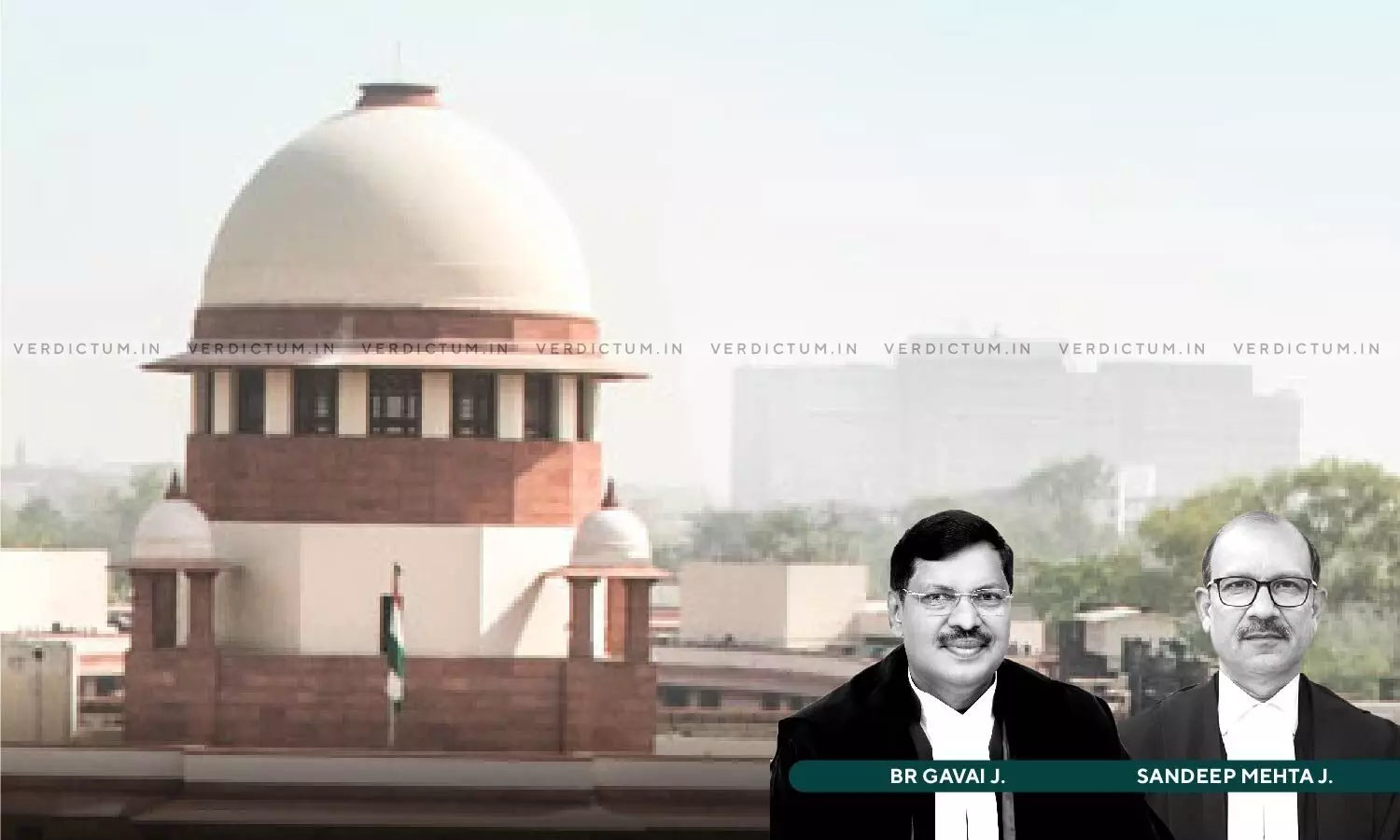
Strong Suspicion Cannot Take The Place Of Proof Beyond Reasonable Doubt: Supreme Court Acquits Murder Accused
 |
|The Supreme Court held that securing a conviction necessitates more than mere suspicion and the prosecution bears the burden of unequivocally proving that the accused, and only the accused, committed the crime.
The Court observed thus while acquitting a murder accused who was concurrently convicted by the Trial Court and the Chhattisgarh High Court.
The Bench comprising Justice B.R. Gavai and Justice Sandeep Mehta observed, “merely on the basis of suspicion, conviction would not be tenable. It is the duty of the prosecution to prove beyond all reasonable doubt that it is only the accused and the accused alone who has committed the crime”.
Advocate Sameer Shrivastava appeared for the Appellant and Advocate Sumeer Sodhi appeared for the State.
This appeal contested the 2015 judgment of the Division Bench of the High Court of Chhattisgarh, which dismissed Accused No. 1’s appeal and confirmed his conviction for the 2009 murder of Shiva alias Sanwar. The prosecution argued that Naykar stabbed the deceased 24 times, wrapped the body, and attempted to burn it. The Trial Judge convicted Naykar, sentencing him to life imprisonment. Despite allowing appeals for accused nos. 2 to 4, the High Court upheld Naykar's conviction.
The Court noted that the prosecution's case in this matter predominantly relied on circumstantial evidence. The legal framework concerning conviction based on such evidence has been clearly outlined in the judgment of this Court in the case of Sharad Birdhichand Sarda v State of Maharashtra [1984 INSC 121]. The Court reiterated that for the prosecution to succeed, the circumstances leading to the conclusion of guilt must be fully established. The fundamental principle is that the accused 'must be' proven guilty, not merely 'may be,' for a court to convict.
The Bench observed that the distinction between 'may be proved' and 'must be or should be proved' is underscored. The established facts should be consistent only with the accused's guilt, excluding any other plausible hypothesis. A complete chain of evidence is imperative, leaving no reasonable ground for a conclusion consistent with the accused's innocence, demonstrating, in all human probabilities, that the accused committed the act.
The Court noted that suspicion cannot substitute proof beyond reasonable doubt, no matter how strong. The presumption of innocence prevails until guilt is proven beyond a reasonable doubt. The Bench observed that the Trial Judge and the High Court primarily based their findings on the recovery of various articles at the Appellant's instance. The identity/similarity of pieces of blanket recovered from the crime scene and the location where the dead body was later burnt formed a crucial aspect. The appellant's failure to explain his examination under Section 313 of the Code of Criminal Procedure, 1973 further strengthened the case against him.
The Bench noted that the prosecution attributed a motive to the appellant, suggesting that he believed the deceased, Shiva, was responsible for the murder of his elder brother. The sequence of events leading to the alleged crime involves the Appellant assaulting Shiva, wrapping the body, and disposing of it with the assistance of others. The prosecution contends that the appellant burnt the clothes wrapped around the dead body after concealing the murder weapon. Ultimately, the Bench noted that the case hinges on the assessment of circumstantial evidence, the reliability of the motive, and the credibility of the prosecution's narrative.
In the case at hand, the Court noted that the appellant's narrative was contained in the Memorandum under Section 27 of the Evidence Act, 1872. Yet, the admissibility of statements leading to the recovery of incriminating material is restricted to information within the maker's exclusive knowledge. The discovery of the deceased's body predates the Memorandum, making only the details related to the recovery of the dagger and rickshaw relevant.
The Bench noted that the Property Seizure Memo shows the dagger was seized from a public location, diminishing its significance. The prosecution claims the incident occurred on October 21, 2009, with the recovery on October 25, 2009. However, the FSL report lacks the deceased's blood group, and the serological report is missing. The recovery of the rickshaw and blood-stained clothes from an open place and the appellant's sister-in-law's house, respectively, raises doubts about their relevance to the crime. The main prosecution point, the dagger recovery, is weakened by open accessibility and no match with the deceased's blood group, as per Mustkeem alias Sirajudeen v State of Rajasthan [2011 INSC 487]. The court emphasizes the need for proof beyond a reasonable doubt, which the prosecution fails to provide.
The Court dismissed the High Court's finding on the appellant's Section 313 CrPC statement, highlighting that false or non-explanation cannot be an additional link in circumstantial evidence cases but can only reinforce conclusions based on proven circumstances.
Accordingly, the Court allowed the appeal and quashed the High Court's judgment with the appellant directed to be released.
Cause Title: Raja Naykar v State Of Chhattisgarh (2024 INSC 56)
Appearance:
Appellant: Advocates Yashika Varshney, Niteen Sinha, and Satvic Mathur.
Respondent: Advocates Shreya Singh, and Bhawana Mapwal.